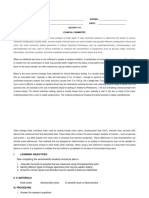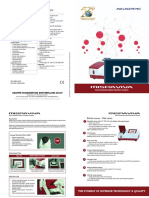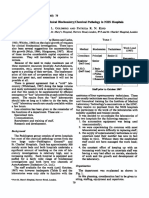0% found this document useful (0 votes)
18 views19 pagesIntroduction To Biochemistry
Biochemistry is the study of chemical processes in living organisms, focusing on biomolecules, cellular processes, and disease mechanisms. The Atellica® instrument by Siemens Healthineers is an advanced automated analyzer used for clinical biochemistry and immunoassay testing, capable of performing a wide range of tests with high throughput. The document also outlines the principles and methods for using both automated and semi-automated biochemistry analyzers, including their clinical significance and applications.
Uploaded by
Rishav GhoshCopyright
© © All Rights Reserved
We take content rights seriously. If you suspect this is your content, claim it here.
Available Formats
Download as DOCX, PDF, TXT or read online on Scribd
0% found this document useful (0 votes)
18 views19 pagesIntroduction To Biochemistry
Biochemistry is the study of chemical processes in living organisms, focusing on biomolecules, cellular processes, and disease mechanisms. The Atellica® instrument by Siemens Healthineers is an advanced automated analyzer used for clinical biochemistry and immunoassay testing, capable of performing a wide range of tests with high throughput. The document also outlines the principles and methods for using both automated and semi-automated biochemistry analyzers, including their clinical significance and applications.
Uploaded by
Rishav GhoshCopyright
© © All Rights Reserved
We take content rights seriously. If you suspect this is your content, claim it here.
Available Formats
Download as DOCX, PDF, TXT or read online on Scribd
/ 19





























































































